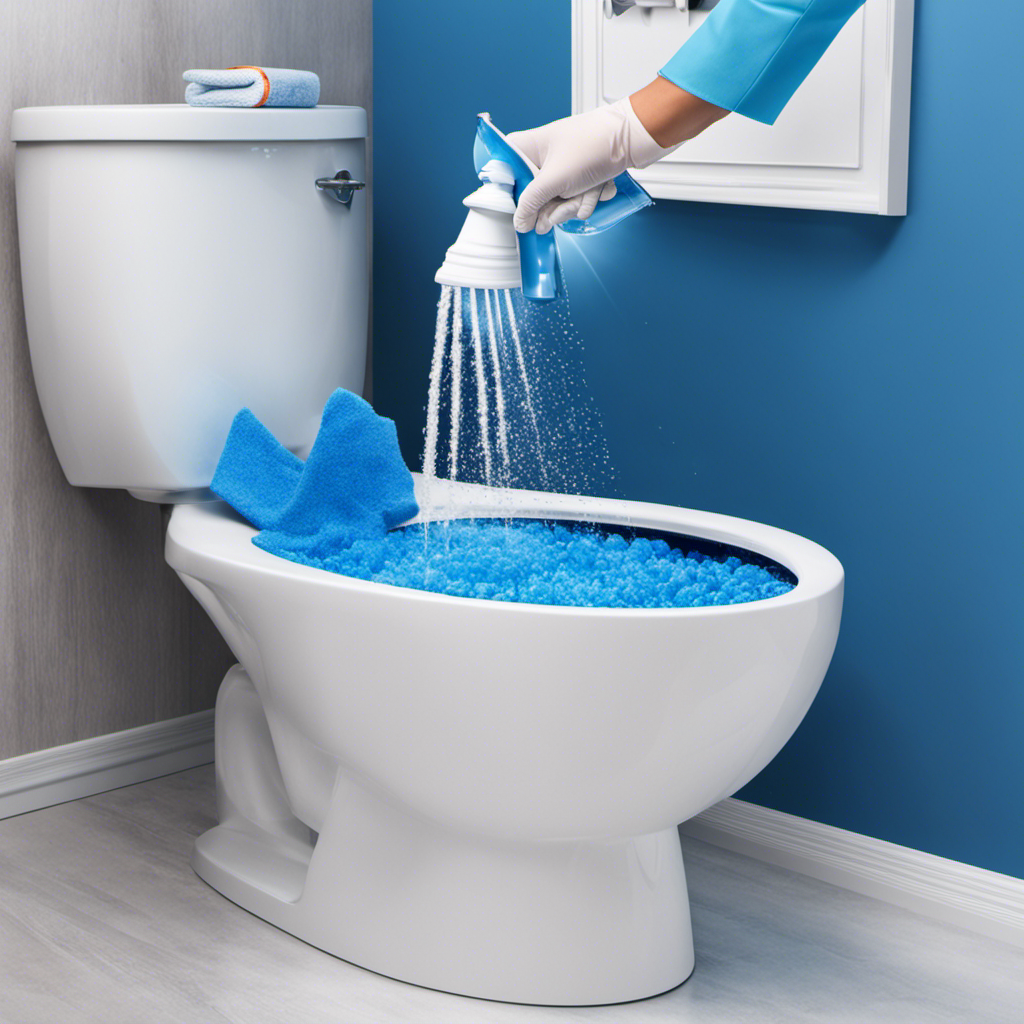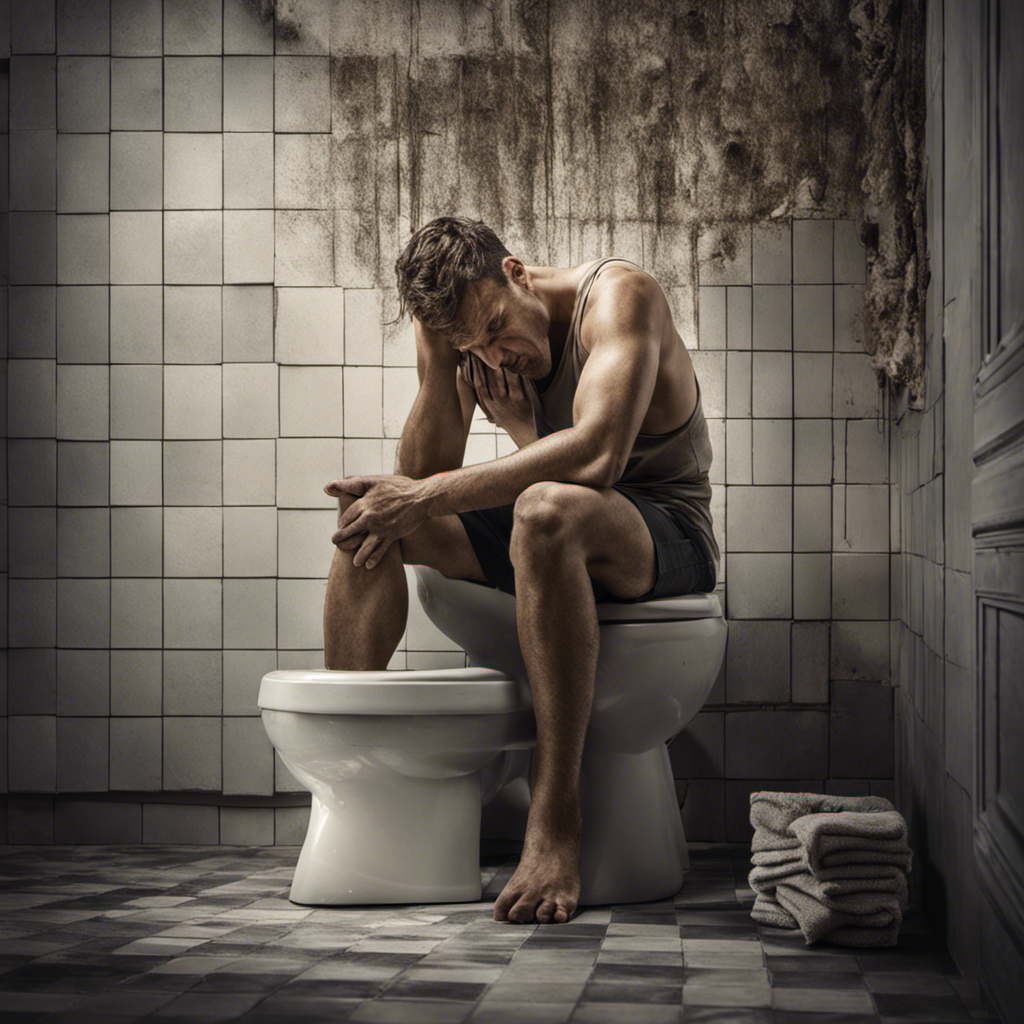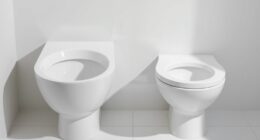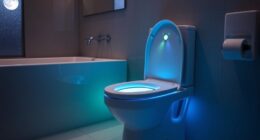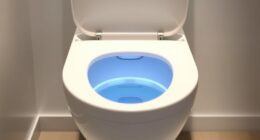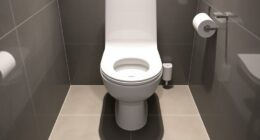We’ve all been there – standing in front of a toilet, wondering which button to press. Well, fear not! In this article, we’ll delve into the world of toilet flush buttons and uncover the two types you’re likely to encounter.
From the traditional flush button to the more modern dual flush button, we’ll explore the differences in their mechanisms and discuss the advantages and disadvantages of each.
So, let’s dive in and become masters of the toilet flush button!
Key Takeaways
- The two types of toilet flush buttons are traditional flush buttons and dual flush buttons.
- Flush buttons provide benefits such as water conservation efforts, lower water bills for users, easy usage, and a user-friendly experience.
- Water efficiency can be achieved through dual flush technology, low-flow toilets, WaterSense certification, and reduction in water consumption.
- Dual-flush toilets have advantages over single-flush toilets, offering two flushing options, increased water efficiency, water-saving options, and potential long-term cost savings.
Traditional Flush Button
One type of toilet flush button is the traditional one, which we often find in older bathrooms. The mechanism operation of this type of flush button is relatively simple. When the button is pressed, it activates a lever inside the toilet tank, which then lifts the flapper valve, allowing water to flow into the bowl and flush away waste.

The design variations of the traditional flush button can include different shapes, sizes, and materials. Some traditional flush buttons have a round or rectangular shape, while others may have a more decorative design. Additionally, the materials used can range from plastic to metal, depending on the desired aesthetic and durability.
Dual Flush Button
The other type of toilet flush button, which is becoming increasingly popular, is the dual flush button. This innovative design allows users to choose between two different flush options, depending on the waste being disposed of. Here are three key features of the dual flush button:
- Water Efficiency: One of the main advantages of a dual flush button is its water-saving capabilities. It offers a full flush option for solid waste and a reduced flush option for liquid waste. By using less water for liquid waste, dual flush toilets can significantly reduce water consumption and lower water bills.
- Environmental Impact: Dual flush buttons contribute to environmental sustainability by conserving water. The reduced flush option helps to minimize unnecessary water wastage, making them an eco-friendly choice for households and commercial buildings.
- Maintenance Requirements: Dual flush buttons are designed to be user-friendly and require minimal maintenance. Regular cleaning and occasional maintenance checks are sufficient to keep the system functioning properly. This makes them a convenient and hassle-free option for users.
Mechanism Differences
We use a dual flush button to operate the two types of toilet flush mechanisms. These mechanisms can be categorized into two main types: the toilet flush handle and the push button mechanism.
The toilet flush handle, also known as the traditional flush mechanism, is a lever located on the side or front of the toilet tank. When the handle is pushed down, it lifts a chain or lift wire connected to a flapper valve at the bottom of the tank. This allows water to rush into the bowl, creating the flushing action.
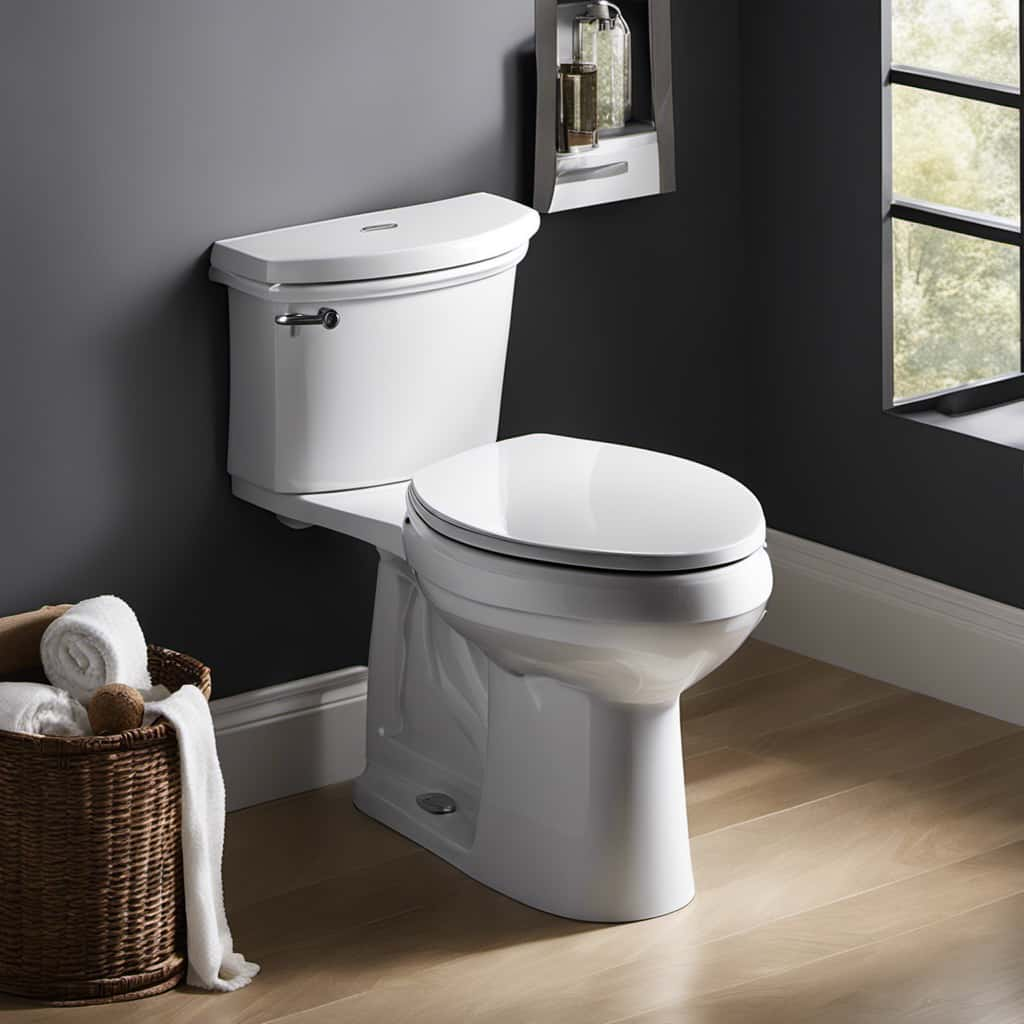
On the other hand, the push button mechanism is a more modern and convenient option. It consists of two buttons, usually located on the top of the toilet tank. One button is smaller and designed for liquid waste, while the other is larger and meant for solid waste. When either button is pressed, it triggers a valve mechanism to release the appropriate amount of water into the bowl.
Here is a table summarizing the differences between the two mechanisms:
| Mechanism | Advantages | Disadvantages |
|---|---|---|
| Toilet Flush Handle | Simple and familiar | Requires more force to operate |
| Push Button | Convenient and efficient | May require more maintenance and repairs |
Water Efficiency
Continuing our discussion on the mechanism differences of toilet flush buttons, let’s now explore the topic of water efficiency. When it comes to toilet flush technology, water efficiency is a crucial consideration due to its environmental impact.
Here are three key points to understand:
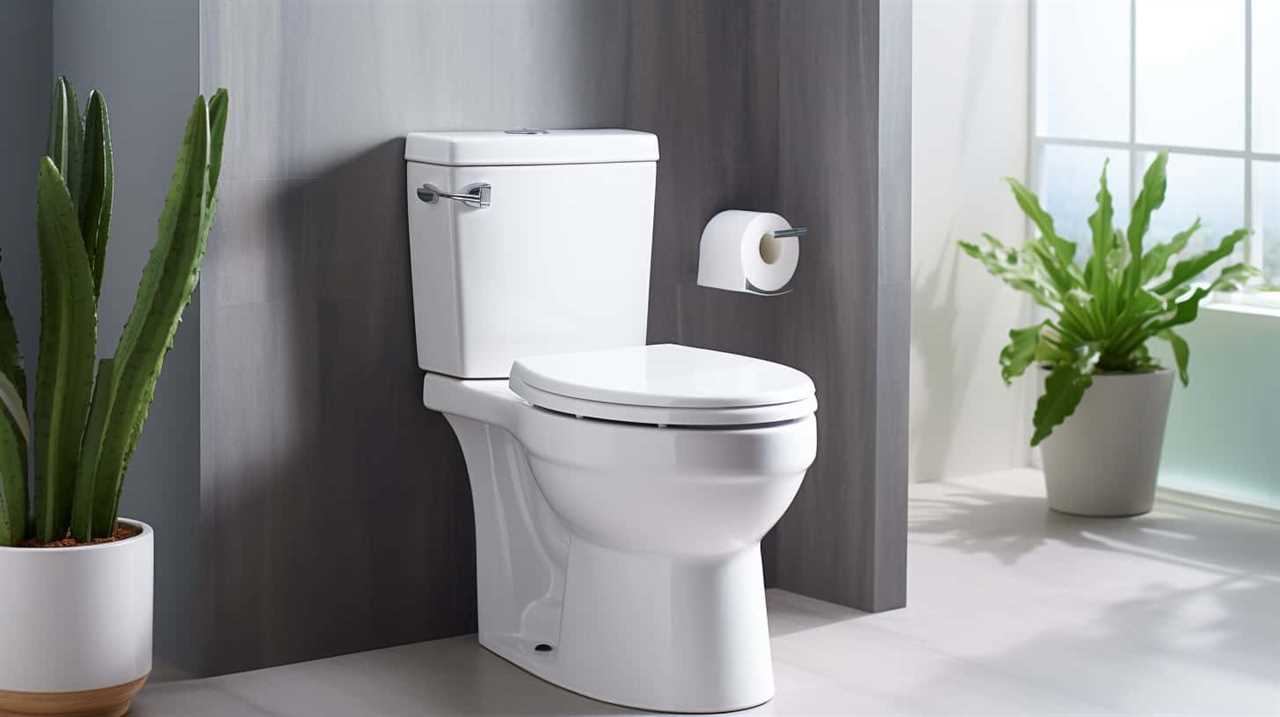
- Dual flush technology: This innovative system offers two flush options – a partial flush for liquid waste and a full flush for solid waste. By giving users the ability to choose the appropriate flush, dual flush toilets can significantly reduce water consumption.
- Low-flow toilets: These toilets are designed to use less water per flush compared to traditional toilets. They achieve this by utilizing advanced flushing mechanisms and optimizing the bowl shape to maintain flushing efficiency while reducing water usage.
- WaterSense certification: To ensure water-efficient performance, look for toilets that carry the WaterSense label. This certification program, backed by the Environmental Protection Agency (EPA), guarantees that the toilet meets strict water efficiency and performance standards.
Pros and Cons
To evaluate the advantages and disadvantages of toilet flush buttons, it’s important to consider their functionality and user experience.
One major advantage of toilet flush buttons is their environmental impact. The dual-flush button, for example, allows users to choose between a full flush and a half flush, conserving water and reducing water usage. This not only helps in water conservation efforts, but also leads to lower water bills for users.
Additionally, flush buttons are generally easy to use and require minimal effort, providing a user-friendly experience.
However, there are also some cost considerations to keep in mind. Dual-flush toilets with flush buttons tend to be more expensive to purchase and install compared to traditional single-flush toilets. Nevertheless, the long-term savings in water usage and bills can outweigh these initial costs.
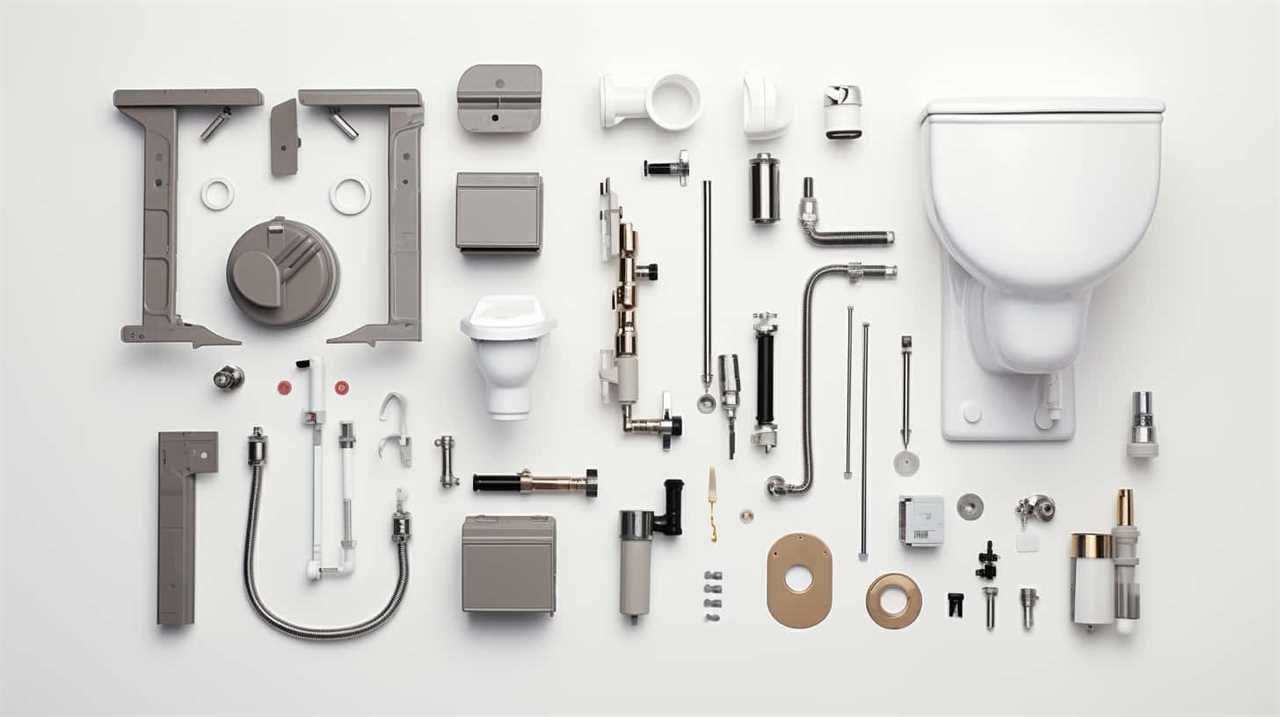
Frequently Asked Questions
Are There Any Special Maintenance Requirements for Toilets With Dual Flush Buttons?
Toilet maintenance for toilets with dual flush buttons may require special attention. Troubleshooting tips include checking for leaks, adjusting water levels, and cleaning the buttons regularly. These steps ensure optimal performance and longevity.
Can the Traditional Flush Button Be Replaced With a Dual Flush Button?
Yes, the traditional flush button can be replaced with a dual flush button. Dual flush buttons offer the benefits of water conservation and efficiency. They allow for different flush options depending on solid or liquid waste.
How Do the Mechanism Differences Between Traditional and Dual Flush Buttons Affect the Toilet’s Performance?
The toilet flush mechanism and water-saving technology impact the performance. Understanding the differences between traditional and dual flush buttons helps optimize the toilet’s water usage and efficiency.
Are Toilets With Dual Flush Buttons More Expensive Than Those With Traditional Flush Buttons?
When comparing the cost of toilets with dual flush buttons to those with traditional flush buttons, it’s important to consider their water efficiency. Dual flush toilets can be more expensive upfront, but their water-saving benefits may outweigh the initial investment.
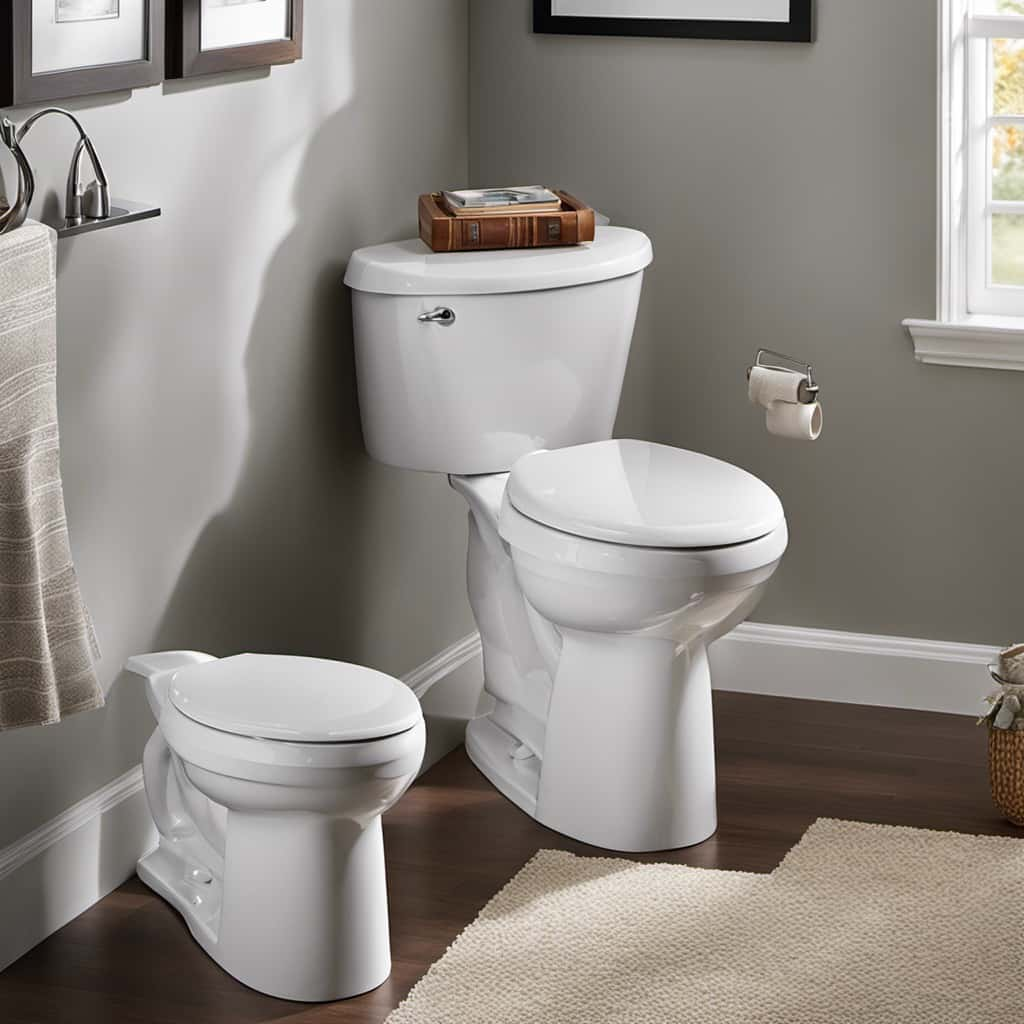
Are There Any Disadvantages to Using a Dual Flush Button System?
There are limitations to using a dual flush button system, but the main advantage is water conservation. It allows us to choose between a full flush and a partial flush, reducing water usage and promoting sustainability.
Conclusion
In conclusion, the two types of toilet flush buttons, the traditional and the dual flush buttons, serve as gateways to a cleaner and more efficient bathroom experience.
Like the yin and yang, they offer a balance between power and water efficiency, catering to our diverse needs.
As we press these buttons, we unlock the hidden potential of our toilets, flushing away waste and embracing a greener future.
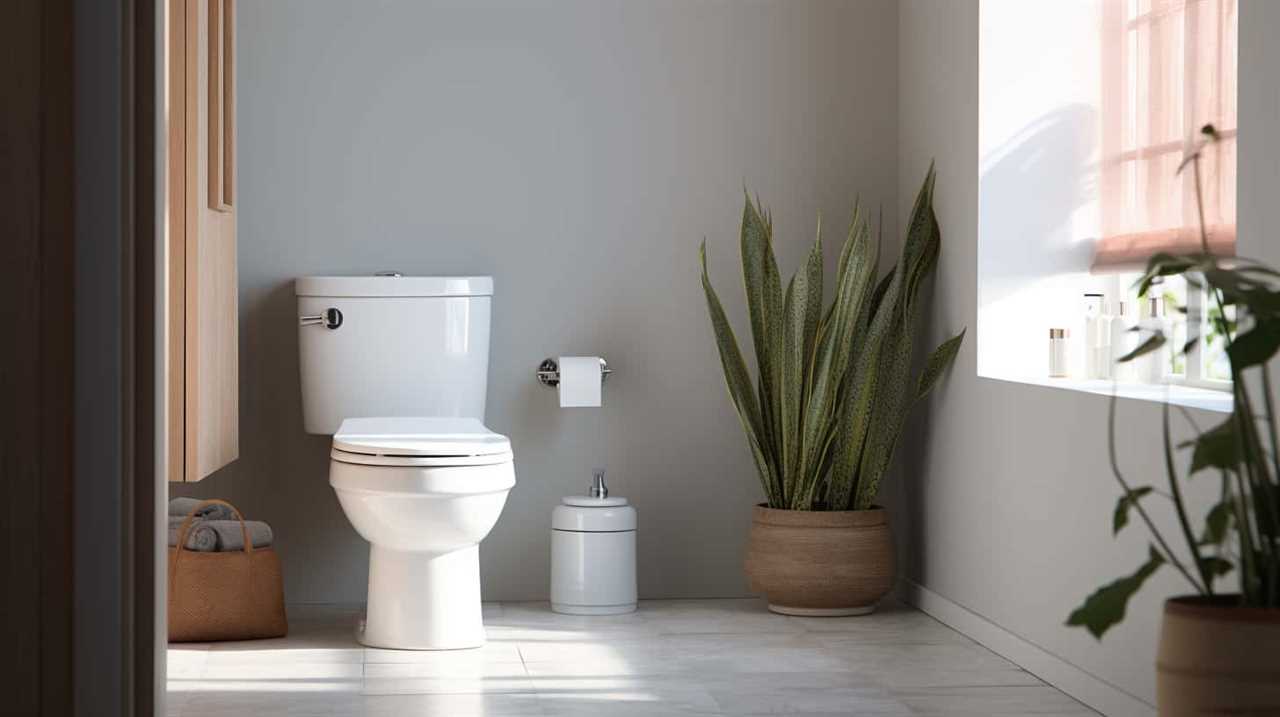
Let’s choose wisely and continue to make sustainable choices for a better tomorrow.




